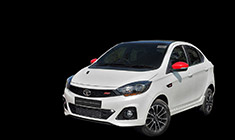News
How I installed the BYD OE dashcam on my Atto 3 for just 5,800 rupees
The cost is Rs.5800. Very reasonable for the ease, usage & aesthetics.
BHPian sushanthys recently shared this with other enthusiasts:
This is a post regarding installation of a BYD dashcam in our BYD Atto 3 premium variant car.
Now, BYD introduced a facelift for Atto3 in July 2024. Prior to the facelift, Atto 3 came as a single fully loaded variant. This car had an inbuilt dashcam. A very handy feature to have in any car.
Post facelift, there were 3 variants – Dynamic (with a 50 kw battery), Premium (with a 60 kw battery) and Superior (with a 60 kw battery and ADAS). None of these have an in built dashcam.
Anyway, my wife bought a BYD Atto3 White Premium variant car in October 2024. The car has so far been a pleasure to own and drive.
I had bought some accessories from topbyd.com after we got the car. They have all been of very good quality. I have written about them in detail in the BYD Atto 3 review thread.
My purchase also included the BYD dashcam. Before I committed, I had checked in youtube regarding the installation of the dashcam. The videos were all about other models of BYD such as Seal and Sealion.
https://youtu.be/Hfo5QhQFJoM?si=jEmoL1WNgtk0LXmg
The installation appeared simple enough. The gist of the matter is that there is a connecting cable for the dashcam in the plastic panel anterior to the IRVM. There is also a dedicated space for the dashcam to slot in. You remove the panel, release the cable, connect to the dashcam and slot the dashcam in place. A DIY job which is not at all difficult to do.

You can appreciate the small circular aperture at the 4 o’ clock position of the picture. That is the place where the camera slots in.
Once the dashcam arrived (the parts are shipped from Hong Kong, takes around 2-3 weeks to arrive), the package looked like this.


The camera is quite small and looks sort of cute. There is provision for a cable connector at the back. A pry tool was also included along with the package to assist with opening the panel.
One Sunday morning, we opened the black IRVM panel & checked. Now there were whispers that the facelifted models did not have a dashcam cable inside. But I was unable to verify this, prior to the purchase. And sure enough, on opening the panel, the connecting cable was nowhere to be found.
I contacted topbyd.com. They replied that the newer models do not come with the connecting cable. They advised me to purchase the connecting cable separately (costs around Rs.2900) and get it fixed at a competent shop or as a DIY project. I was not sure about this. There is a youtube video which shows how to get this done and the DIY job is actually not that hard. But you had to route the cable through the A Pillar in front of the airbag, which was not ideal.
https://youtu.be/baLi6deTyiY?si=srOGLfRWoedbWKwK
I checked for other dashcam options but was not happy with whatever I saw. So kept the dashcam project in the backburner for the moment.
Last week, I took the Atto3 to Kochi for the car’s first service (the first service is at 5000 km and then every 20,000 km/1 year thereafter). They finished everything in 2-3 hours. A Pleasant experience.
I took delivery of the car and was driving it out when I remembered about the dashcam. To the security guy’s bemusement, I reversed all the way back to the reception. I checked with my service manager whether they did the cable installation for the dashcam.
The service manager said “But Sir, the connecting cable is there in your car”. He explained that the cable is sort of hidden under the roofing panel but can be taken out. He had never done it for a premium variant car but had done it for Dynamic variants so was very confident that the cable will be there.
The service technician was called and they went to work immediately. The steps went like this.
- Remove the black plastic panel ahead of the IRVM (comes out in 2 separate segments)
- Unscrew the IRVM
- Unclip the lower part of the cabin lights panel
- Remove the 2 screws connecting the Cabin lights panel to the roof
- Remove the cabin lights panel
- Remove the medial clip of the sun visor on the driver’s side
- Loosen the roof liner
The auto IRVM and cabin light connections are present here. Take care to carefully detach them during the work.
You can see a thick cable running across the roof. This contains the connection for the sunroof & the sunroof shade. It also contains the cable for the dashcam. The cable is fixed to the roof tightly with a clip (blue arrow) and it has to be released first. The cable has to be pulled out slightly. The 3 cables are bound together by a tape and the tape has to be unwound. The dashcam connecting pin is well buried and the tape should be cut precisely over the pin to avoid cutting other wires (I was helping the technician and forgot to take pictures of releasing the cable)
The work took around 20-30 minutes. It can be done as a DIY project if you are competent & confident and has the right tools. But I would recommend that it be done by professionals. It is not an easy job by any means.
The technician released the dashcam cable and screwed everything back together. He reconnected everything. He left the black panel uncovered since it would make it easier for me to connect the dashcam. The last part was just plug and play and I was confident I could do it by myself (the dashcam was at my home). I made sure that the sunroof and the cabin lights were working before driving back to Kottayam.
So today morning, finished the job, with my wife’s help. The cable has to be connected to the camera with the correct alignment of pins (you will hear a satisfying click).

The camera is slotted into its designated place (there is a small plastic cap covering the camera aperture which the technician had removed). Again, you will hear a satisfying click when the camera is fitted correctly. There is a clip on the roof of the panel where you can snugly hitch the wire.



Once the camera is in place, start the car. Once the touchscreen is on, you will have to reboot it. Once it restarts, it will recognise the dashcam and will reboot once more.

Once the screen restarts again, you can see the dashcam application. You can open it and check the settings.


The image quality is good. You have the option to select the time loop for each recording. Option to record a particular event is also there.


Once you are sure that everything is working, fix the black panel back. It comes in 2 segments and both have to be fitted separately. It took some tinkering but was easy enough at the end. The whole process took around 15 minutes.


The dashcam needs a microSD card. BYD recommends a max capacity of 128 GB. I will have to get one sometime this week. The microSD card slot is situated low down in the dashboard at the lower storage area.

Advantages of the BYD dashcam
- Ease of installation(camera). No separate need of cables, hardwiring.
- Well integrated with very good aesthetics. The dashcam is virtually invisible, post installation. Despite taking multiple snaps, I could not get a picture in which the dashcam was visible from outside.
- The image quality is good (HD).
- Ease of usage. Can be operated directly via touchscreen. No need for mobile apps.
- The cost is Rs.5800. Very reasonable for the ease, usage & aesthetics.
Continue reading BHPian sushanthys' review of the BYD dashcam install for more insights and information.



















